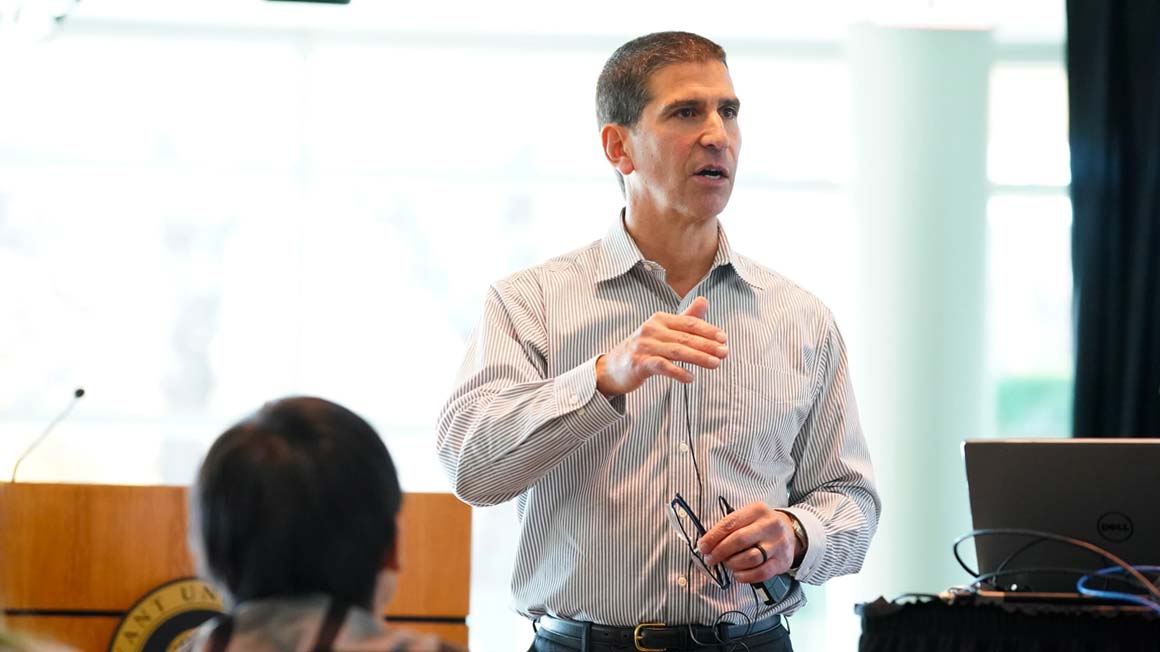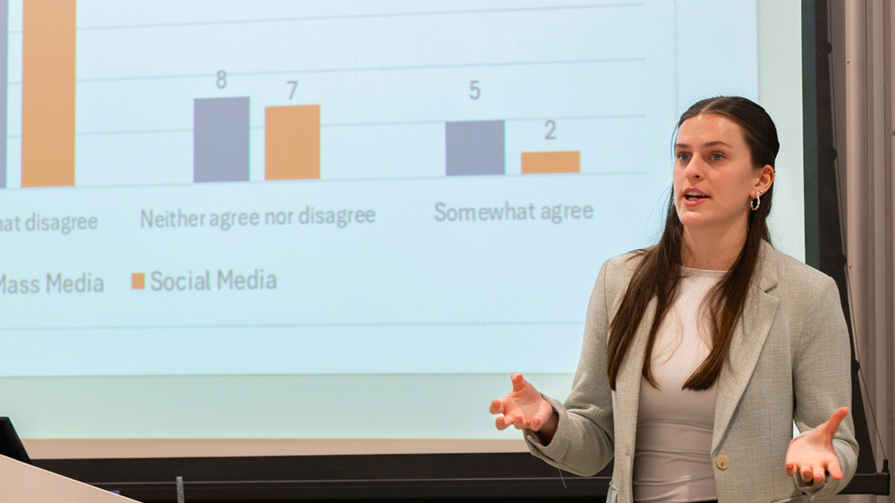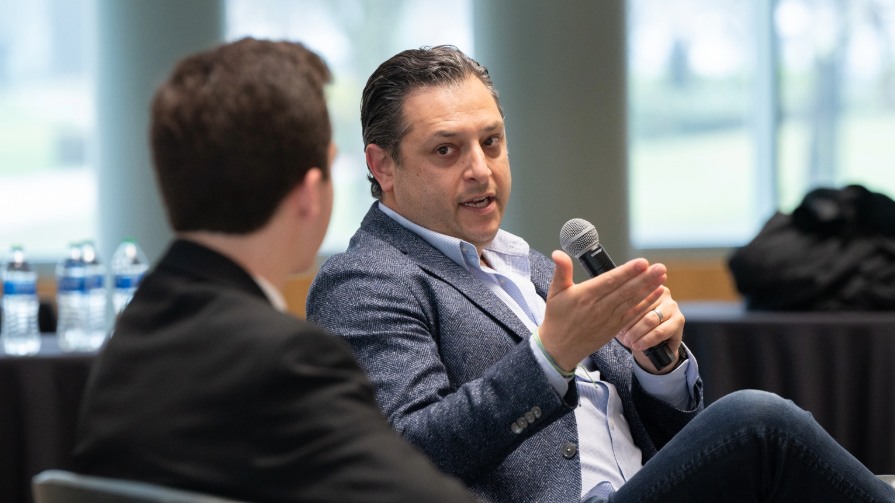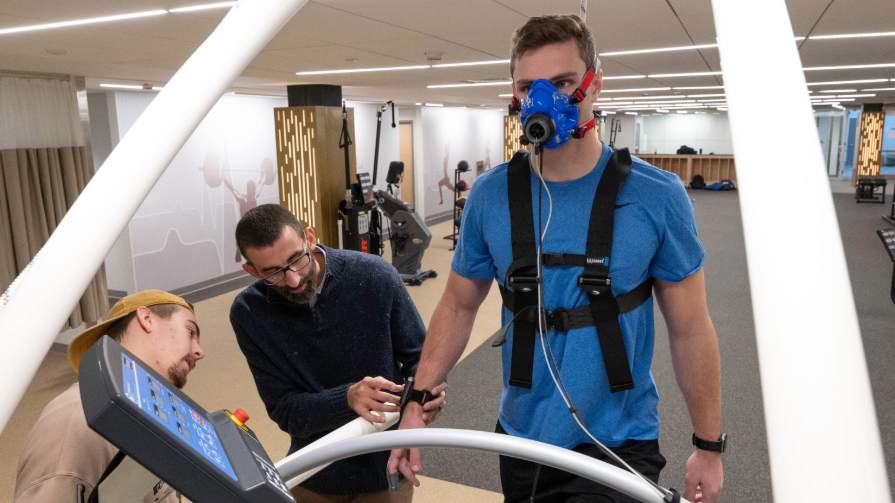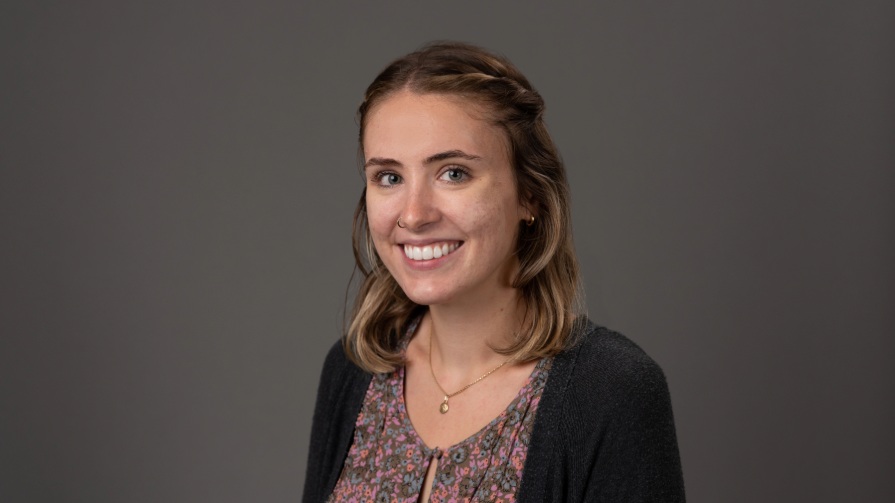At the sixth annual Analytics Using SAS® Conference, faculty, students, regional industry professionals, and representatives from the SAS® Institute convened to discuss how emerging technologies, such as artificial intelligence (AI) and machine learning, will change industry and the workforce, and what that means for the future of education and training.
The event, hosted by Bryant’s Advanced Applied Analytics Center (AAAC), provided an opportunity for professional collaboration within the industry.
“Every student at Bryant should have some exposure to and expertise in analytics.”
In his opening remarks, Provost and Chief Academic Officer Glenn Sulmasy, J.D., LL.M., highlighted Bryant’s longstanding tradition of anticipating trends and helping students “develop skills that are in high demand in today’s market.” According to Sulmasy, who emphasized the importance of interdisciplinary learning at Bryant, “Every student at Bryant should have some exposure to and expertise in analytics.”
The University recently expanded its unique integration of business and the arts and sciences to include data literacy and innovative design thinking programs for all students, ensuring graduates are prepared to succeed no matter what the data-driven future brings.
“Engage with analytics at the speed of light”
The Nov. 6 conference featured four industry experts from the SAS Institute, Bryant University, and the private sector, who discussed topics related to visual analytics, artificial intelligence, data science, and employment opportunities.
Keynote speaker James Harroun, Senior Analytical Training Consultant at SAS® Institute, provided an overview of SAS© Viya. An extension of the SAS® platform, SAS® Viya is a cloud-enabled, in-memory analytics engine that allows you to “engage with analytics at the speed of light.”
Harroun, who has worked in data management and analytics for more than 20 years, said, “Traditionally, there’s been this gap between people who develop the software, people who analyze the data, and people who need to deliver the message.” With this latest platform, instead of simply sharing data or an image, “you give them the ticket to interact [with the data] themselves.” The platform allows the user to do work at scale, in-memory, and from a collaborative perspective, changing the way analytics are analyzed.
The future employment landscape
Thomas Dougherty, Executive in Residence of Information Systems and Analytics at Bryant, suggested that although many jobs were lost to AI, “The jobs we’re going to lose in the future are going to be much more high paying and desirable jobs.” Dougherty came to Bryant from the Emeritus Institute of Management, where he assisted Columbia University and MIT in developing an online curriculum in data science. Prior to academia, he was Vice President of Analytics at Fidelity Investments.
“The market in RPA (Robotic Process Automation) is growing rapidly and the vast majority of jobs are going to be replaced by software robots, not physical robots.”
According to Dougherty, “The market in RPA (Robotic Process Automation) is growing rapidly and the vast majority of jobs are going to be replaced by software robots, not physical robots.” In the future workforce, “it will be hard to compete with something that can run 24 hours a day with 100% accuracy.” He also discussed the potential impact of AI and machine learning. “Medicine is an area where we’ll see lots of people trying to use AI,” he said. Radiologists could be affected by this technology since AI can easily read CAT scans and PET scans to determine what’s wrong.
Analytics to recognize patterns
Senior Data Scientist Daniel Hebert '13 shared what it’s like to work at Foursquare Labs, Inc., a location technology platform. He oversees a team of data scientists and works with Placed powered by Foursquare, a product that measures media performance.
Using popular tools like Spark SQL, R, Python, and Tableau, Hebert and his team develop and prototype methodologies related to advertising measurement, provide data science support to clients, and deliver custom metrics and reporting. Hebert shared how Foursquare’s rich panel data allows his team to understand and analyze visitation patterns during a campaign and build models to compute synthetic control visit rates.
AI applications brought to life
Neela Niranjani Vengateshwaran, a Data Scientist with the Advanced Analytics team at SAS® Institute, shared an overview of the AI applications available to SAS® customers: Computer Vision, Natural Language Processing, and Open Source Intelligence. With experience in Deep Learning projects, primarily in object detection and image recognition, she integrates open source technologies with SAS® to create more robust Machine Learning models.
Vengateshwaran suggested that true AI applications are not a single capability, rather a combination of capabilities brought to life. Her presentation demonstrated how a combination of these applications provides a new way to interact with solar farms.
Analytics at Bryant
In fall 2017, Bryant began offering a Bachelor of Science in Data Science, in order to meet the growing demand in one of the fastest-growing sectors worldwide, and to educate the next generation of data scientists.
Bryant’s Advanced Applied Analytics Center (AAAC) partners with SAS® on three certification programs for Bryant students: an undergraduate interdisciplinary concentration in applied analytics, an undergraduate concentration in applied mathematics and statistics with certification in data mining in the Department of Mathematics; and a graduate certificate in business analytics.
